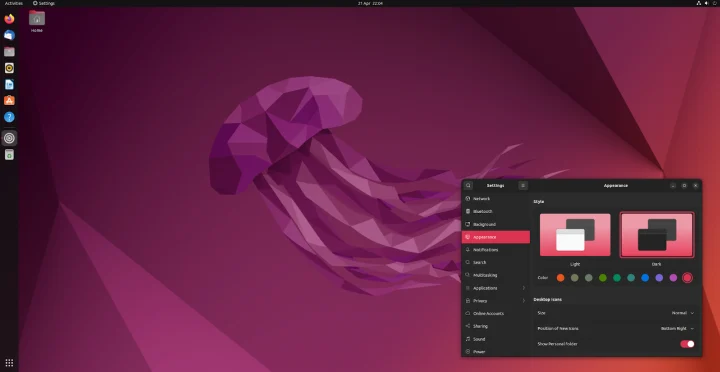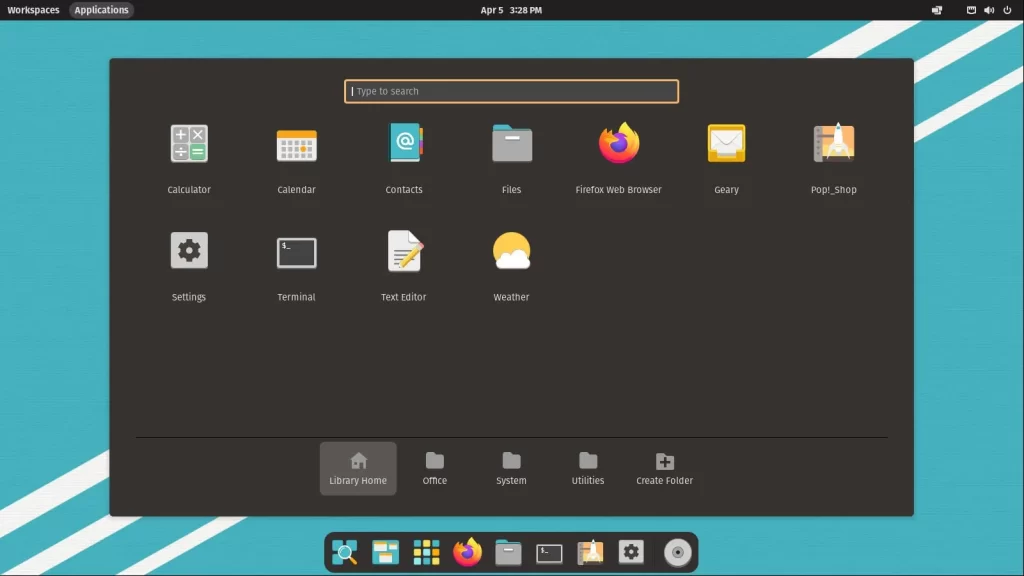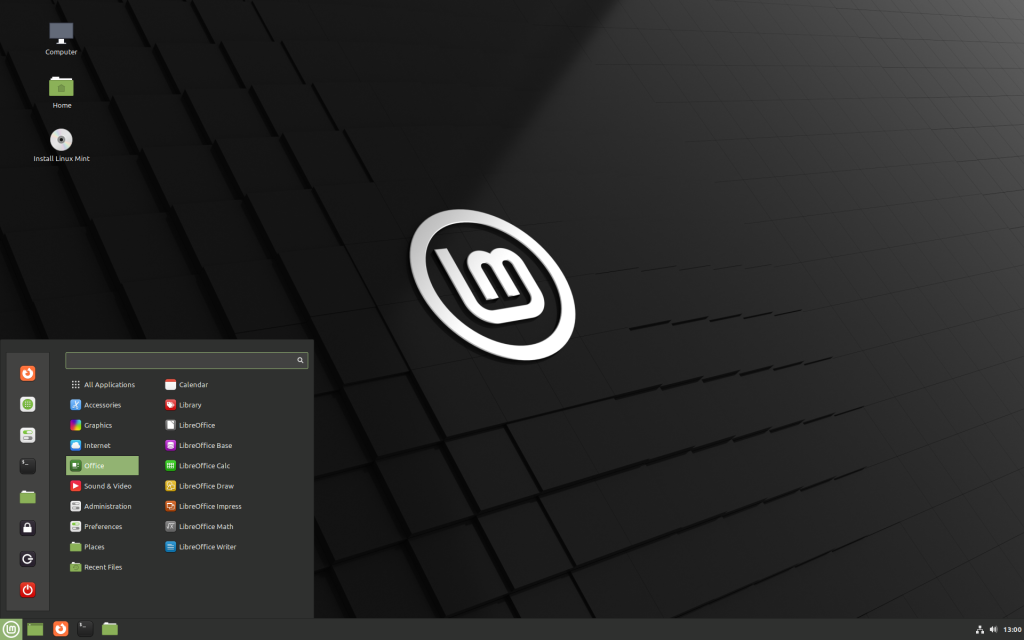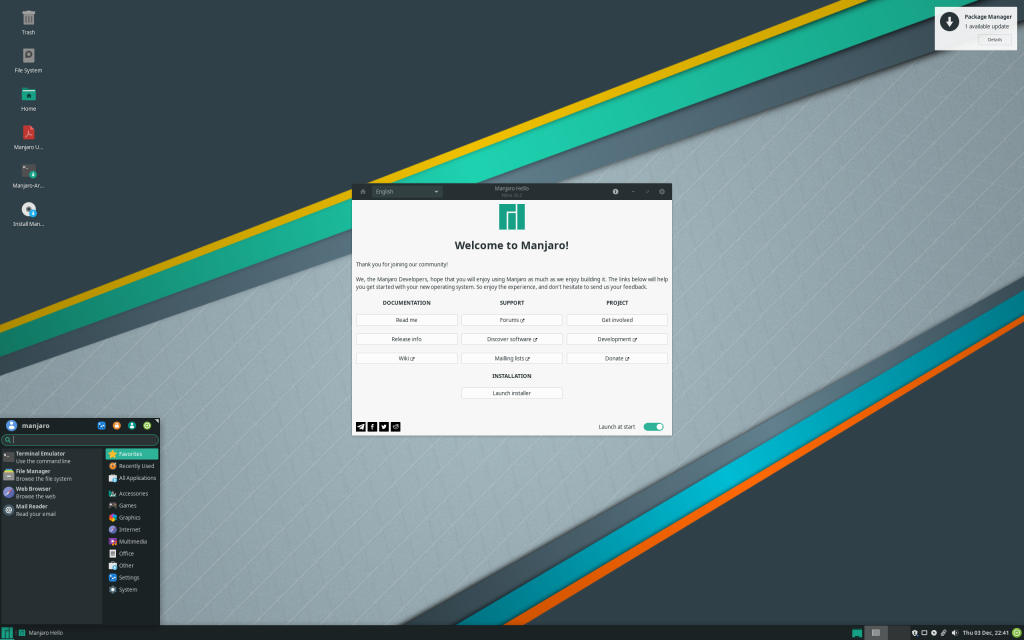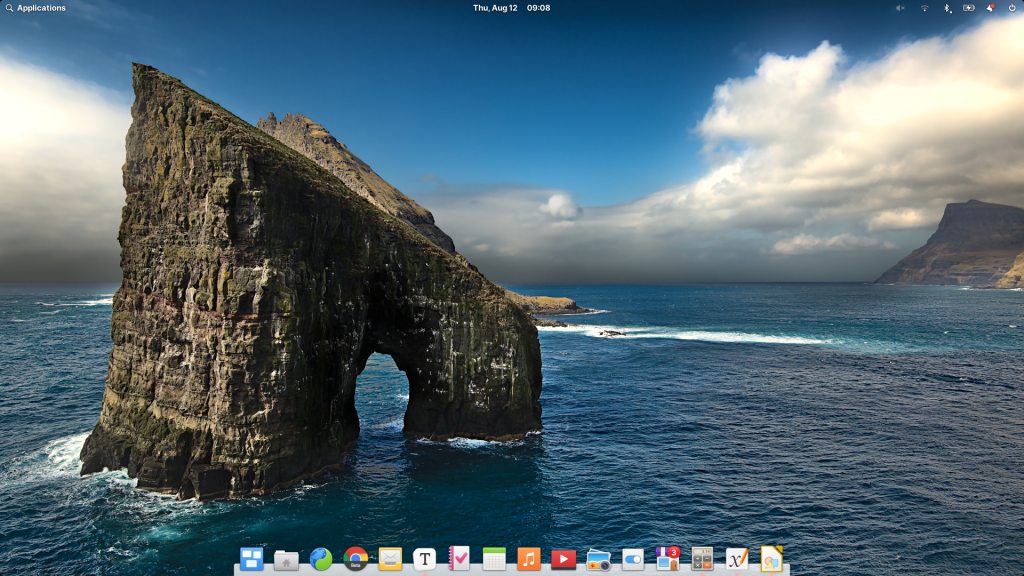- Top 10 Best Linux Distros For Laptops
- Best Linux Distros For Laptops
- 1. Linux Mint
- 2. Ubuntu
- 3. Pop_OS! from System76
- 4. MX Linux
- 5. Elementary OS
- 6. Fedora
- 7. Zorin
- 8. Deepin
- 9. Solus
- 10. Debian
- Best Linux Distros for Laptops 2023
- 1. Ubuntu and Ubuntu-Server
- 2. PopOS
- 3. Linux Mint
- 4. Manjaro
- 5. Elementary OS
- Summary
Top 10 Best Linux Distros For Laptops
Linux is a free and open-source operating system based on Unix. Nowadays, Linux has gained huge attention and is being widely used due to its security and flexibility. In this article, we are going to cover some best Linux Distros also called Linux Distributions. Linux distros are operating systems that are based on the Linux kernel.
Best Linux Distros For Laptops
So now let’s take a look at the best Linux distros for laptops in 2022 and see which one can provide the best security and flexibility to our laptops.
1. Linux Mint
Linux Mint is a popular distribution of Linux based on Ubuntu and Debian. It is a community-driven free and open-source Linux distribution providing a huge number of packages. It is easy to use with an interactive User Interface. In October 2012, the Linux Format titled Linux Mint was the best distribution of 2012. It was first released in 2006 with a beta version 1.0 named ‘Ada’. Currently, the latest version of mint is ‘Ulyssa‘ released in July 2022. It comes with default software like LibreOffice, Firefox, Thunderbird, HexChat, Pidgin, and Transmission, while one can download other software from the package manager. Linux Mint maintains the operating system and develops software for it, mostly in Python.
2. Ubuntu
This is one of the most common Linux distributions used by people. Due to its user-friendly interface and elegance, it is widely preferred by people who are beginners to Linux. It can be used not only on PCs but also on tablets and smartphones. Ubuntu acts as a base for many other Linux distributions like Lubuntu 20.04 LTS, Kubuntu 20.04, and Linux Mint 20.04 LTS (Ulyana). It releases updated versions predictably every six months with security and bug fixes. Ubuntu supports the GNOME desktop environment and is a popular operating system for cloud computing while also providing day-to-day useful applications like Firefox, LibreOffice, Audacious, GIMP, etc.
3. Pop_OS! from System76
Pop_OS! is a Linux distribution developed by System 76 featuring a custom GNOME desktop. Developed recently, it was first released in October 2017. Pop_OS! also provides many default applications like Geary, LibreOffice, and Firefox while other software can be installed from APT, the package manager in Pop OS.
4. MX Linux
MX Linux is a popular Debian-based Linux distribution. It was first released in March 2014 and provides a user-friendly experience for both beginners and intermediate Linux users. Its discussion started within the MEPIS community which was later joined by antiX for development. MX Linux has basic tools like a graphic installer, a GUI-based method to change a Linux kernel, MX-snapshot, etc.
5. Elementary OS
Elementary OS is yet another Linux distribution based on Ubuntu LTS developed and maintained by Elementary, Inc. It comes with a custom desktop environment called Pantheon and many custom apps including Photos, Music, Videos, Calendar, Terminal, Files, and more. It also comes with some familiar apps like the Epiphany web browser and a fork of Geary mail. As per Elementary OS, it is a fast, open, and privacy-respecting replacement for Windows and macOS.
6. Fedora
Fedora is developed by Fedora Project and sponsored by Red Hat. It is one of the most user-friendly distros. The default desktop environment in Fedora is GNOME and the default user interface is the GNOME Shell while other desktop environments are also available and can be installed. Fedora provides various software that is pre-installed in the os and more software can be installed from the DNF package manager. Fedora Linux was released in 2003 when Red Hat Enterprise Linux was discontinued.
7. Zorin
Zorin is a Linux distribution based on Ubuntu. It has a very easy Graphical User Interface (GUI) and programs similar to windows which are designed specifically for newbies switching from Windows to Linux. It allows users to run compatible Windows software for ease of transition on it. Written in C, C++, Python, D, and Java, Zorin OS Company is based in Dublin and was started in 2009.
8. Deepin
Deepin Linux also called Linux Deepin and Hiweed Linux is a distro based on Debian. It supports its own desktop environment, DDE, the Deepin Desktop Environment. It is developed and maintained by Wuhan Deepin Technology in Wuhan, China. Therefore, it is majorly used by Chinese people. It was initially released in February 2004 and later in 2015 Wuhan Deepin Technology joined the Linux Foundation.
9. Solus
Solus is based on Linux Kernel. Earlier it was called Evolve OS. It is introduced for personal computers and personal use. It does not claim any software support specifically for enterprise and server environments. Solus was first launched in December 2015 with version 1.0. It is stable, very easy to use, and it seems to have a wide selection of the latest software available in its own repositories. It features Budgie, GNOME, KDE Plasma, and MATE desktop environments. Solus is available only for 64-bit computers.
10. Debian
Debian is one of the oldest Linux distributions which is a base for other distributions like Ubuntu, PureOS, and SteamOS. It was released first in 1993. Debian has won many awards including The best Linux distro of 2011. It comes with applications like LibreOffice, Firefox, Evolution mail, K3b disc burner, VLC media player, GIMP, etc. It is best suited for server distribution and is very secure and user-friendly.
Best Linux Distros for Laptops 2023
In this article today we will be presenting to you the best 5 Linux distributions for our Laptop! A Laptop is our daily portable workspace and so the distro must be good at what it does in order for a positive working experience. So let’s not waste any more time and jump right into it!
1. Ubuntu and Ubuntu-Server
The first name that pops up in my mind is Ubuntu. It has been a well-developed and complete OS. Most Linux newcomers are welcomed usually in this OS and some never leave it.
It is extremely easy and straightforward to install and update the system. The LTS Release circle is for 6 months so if there are some broken packages in one version you can easily hop onto the previous or the next update over the span of 6 months. The latest release as of the time of writing this article is LTS 22.04 (Jammy Jellyfish).
The desktop environment comes with smooth animations thanks to the GNOME 4.2 update, the UI is sleek and has a purplish theme by default. Of course, everything is customisable down to the desktop environment itself.
There are a lot of pre-installed applications for the user’s benefit. The famous LibreOffice suite of applications serves the primary purpose of meeting needs of all your office needs. The default browser in the latest version is Google Chrome, however, you can still install Firefox if so desired.
The gaming experience is enhanced by installing Steam through the Ubuntu Software which provides one-click app installations. Ubuntu by far is the most down-to-basics Linux Distro that is perfect for beginner Linux users. For older Laptops (or if you just want an inexpensive home server), Ubuntu-server is a great option.
2. PopOS
PopOS is a Linux OS that is based on Ubuntu and is maintained by the popular American computer manufacturer System76. In 2022 PopOS released a new version, PopOS 22.04. The great thing about this release is that a lot of the applications are using the brand new GNOME42.
What makes PopOS different from Ubuntu is that it also encapsulated the aesthetic and the beauty of the OS with the functionality of Ubuntu, without adding too much trouble to the GPU and CPU.
One of the new things that got added was the option to automatically update your system. (You can check it out under settings and then OS Update and Recovery). The user is able to transform their look by simply navigating to the appearance settings and quickly changing to light or dark themes, the change is very snappy and the animation really pops out the change.
On the apps and installation side, the Pop Shop is definitely up to the mark and makes installing and maintaining software a breeze. Overall PopOS is for the perfectionists out there who want both the aesthetic and the functionality of their system.
3. Linux Mint
Linux Mint 20.3 is the final and best update in the Linux Mint 20 series. Linux Mint features the famous Cinnamon desktop environment. This desktop environment comes with many visual and functional aspects. It is very easy to use and elegant at the same time. With the newest Cinnamon 5.2 comes the calendar update. It can be synced with Google or other online calendars that the user may have. With Linux Mint we get a very snappy performance this is because most of the default apps (such as the nemo file manager, and celluloid video player) are built for performance.
The newest Linux Mint also comes with the Linux kernel 5.4, with which AMD Radeon graphics performance has been enhanced significantly. Linux Mint is a lightweight and performance booster at the same time, making it one of the best choices for an older Laptop.
4. Manjaro
Not every Linux distro delivers a stable, secure and robust user experience. And Manjaro does just that! Ubuntu and Manjaro Linux are considered to be two of the most beginner-friendly Linux distro among the thousands and thousands of distros out there. Manjaro is a breeze to install since it uses the famous Calamares installer.
With its base on Arch Linux, Manjaro comes with the bleeding edge technology that many Linux users crave and hence some users ever prefer Manjaro to Ubuntu(which is based on Debian). Manjaro also gives the user the option to install and use multiple kernels, and thus is suitable for hardcore Linux users.
The direct access to the AUR opens up vast possibilities for the end user and that’s what makes Manjaro so cool. Pacman package manager is also to be credited for this. Bleeding edge technology and limitless customizability are what make Manjaro one of the best distros to consider for your laptop.
5. Elementary OS
Elementary OS is another great option for your laptop. This year there has been an update of the distro named version 6.1 Jólnir(another name for the Nordic god Odin). The OS is both more visually appealing than most other distros and (with the new update) delivers a pretty good performance.
The OS promotes the pay-what-you-want model in multiple facets from the installation of the OS itself to the installation of indie apps. This encourages indie developers to create new and cool apps and services.
Similar to other popular distros Elementary OS also comes with only the most useful apps that a user might want to have pre-installed. There are also some unique features such as screen time monitoring, picture in picture mode etc that makes it all the more appealing to the end user.
Summary
So there you go! These are the top five best distro choices as of 2022 according to team LinuxForDevices. We hope these five choices will make your life easier while distro-hopping. The overall criteria for choosing an OS for the most part is choosing an OS that gets out of the way and lets you do the job.
The distro should also offer a minimum amount of customization in terms of the window manager and the desktop environment and that’s why we went with these five. We hope you had a good read and as always thanks for reading!


